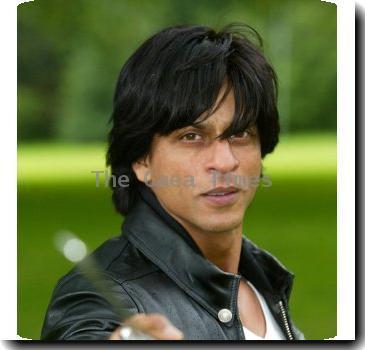With women in focus, will Bollywood hit bulls eye?
By IANSSunday, May 23, 2010
NEW DELHI - Women-centric themes seem to have caught Bollywood’s fancy yet again, whether it is Priyanka Chopra’s “Saat Khoon Maaf”, Sonam Kapoor’s “Aisha”, Kareena Kapoor-Kajol’s “Stepmom” remake or Rani Mukerji-Vidya Balan- starrer “No One Killed Jessica”. But the big question is will these movies go on to become hits.
Directed by Vishal Bharadwaj, Priyanka’s “Saat Khoon Maaf” is based on Ruskin Bond’s story ‘Susanna’s Seven Husbands’, about a woman who bumps off her seven spouses.
“It’s too early to speak about ‘Saat Khoon Maaf’ but it will be a very unique film for sure,” said Priyanka. “One of the toughest characters of my life…so scared…Don’t know how I’ll pull it off.”
And Sonam’s “Aisha”, an adaptation of Jane Austen’s novel “Emma” about the perils of misconstrued romance, too revolves around the female protagonist’s life.
Then there is Karan Johar’s remake of Hollywood movie “Stepmom”, a heart-warming tale of two women. The Hindi remake stars Kareena, Kajol and Arjun Rampal in the lead and is being directed by Siddharth Malhotra.
Mani Ratnam’s much awaited film “Raavan” stars two men - Abhishek Bachchan and southern star Vikram. But it is Aishwarya Rai who is being described by her co-stars as the “hero” of the film.
“Aishwarya is the hero in ‘Raavan’,” said Abhishek. Vikram too had the same words for the former Miss World.
One-film old Rajkumar Gupta’s “No One Killed Jessica” has also hogged the media limelight. Starring Vidya and Rani, it is inspired by the 1999 murder of model Jessica Lall.
Apart from these so-called biggies, debutant Tarun Dhanrajgir is making “Dia” on the issue of date rape and he has teamed up with newcomer Shital Shah in it.
But until now, films with women-centric themes were not too many and most of them failed at the box office.
“Women are so under-represented, particularly three-dimensional women. As a female director, I always take female protagonists that are very strong, vibrant and ultimately very truthful,” Britain-based Indian filmmaker Gurinder Chadha told IANS.
She is known for movies like “Bend It Like Beckham”, “Bride And Prejudice” and “It’s A Wonderful Afterlife” — all of them showed one or the other aspects of a woman’s life.
The portrayal of a female character of substance had its fair share in movies like “Dor” (2006), “Silsilay” (2005), “Tehzeeb” (2003), “Pinjar” (2003), “Chameli” (2003), “Satta” (2003), “Filhaal” (2002), “Zubeidaa” (2001) “Lajja” (2001), “Chandni Bar” (2001) and “Fiza” (2000).
But all these films were not commercially successful.
“Our society has its own limitations. Certain ideas will be unacceptable to our audience…. We don’t see women as powerful entities. Even today, most heroes will tell you ‘I want a homely wife who will take care of my kids and look after the house’. Only when women progress will the scripts progress too,” superstar Shah Rukh Khan had once said.
The list of women-driven films that wrote a success story at the box office is not very long. One of the few such films is Madhur Bhandarkar’s 2008 release “Fashion”.
Narrating the story of the rise and fall of two models, “Fashion” not only got rave reviews, it also set the cash registers ringing. Both the female leads - Priyanka Chopra and Kangana Ranaut - won their first National Award for convincingly portraying the dilemma of fashion icons.
Even Konkona Sen Sharma-starrer National Award winning film “Page 3″ (2005) was lapped up by the audiences. In the short list of female-oriented movies that wrote a success story are “Kya Kehna” (2000), “Astitva” (2000) and “Dushman” (1998).
Bipasha Basu-starrer “Corporate” (2006) won critical acclaim and was a moderate success at the ticket window. Similarly, Vishal Bharadwaj’s recent production “Ishqiya” bagged positive reviews but in commercial terms, it wasn’t a big success.
Between the 1980s and 1990s, Bollywood produced a mix bag of female-oriented movies - some like “Umraao Jaan”, “Prem Rog”, “Ram Teri Ganga Maili”, “Khoon Bhari Maang”, “Nache Mayuri” and “Damini” were hits, while art films like “Mirch Masala”, “Arth”, “Mandi”, “Rudaali”, “Lekin”, “Sardari Begum”, “Mammo”, “Mrityudand”, “Maya Memsaab” and “Fire” earned critical acclaim.
By and large, women are presented as decorative pieces to fulfil the glamour quotient of a Bollywood movie.
Said noted film historian Gautam Kaul: “There is no comeback for women in Hindi cinema for at least the next five years until there is a change in the public psyche itself or if we have a role model like we had in Indira Gandhi. She may not have inspired movies but spaces were shared.”
Tags: Abhishek Bachchan, Aishwarya Rai, Arjun Rampal, Kajol, Miss World, New Delhi, Priyanka Chopra, Shahrukh Khan, Showbiz, Sonam Kapoor

